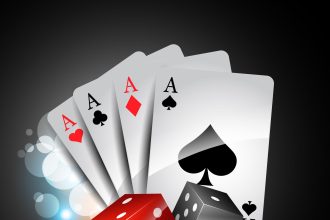The bright lights and exciting sounds of a casino can serve as powerful sensory cues compelling us to try our luck at games of chance. Even those who seldom gamble may find it difficult to resist placing a bet when presented with the opportunity. But what is it about gambling that makes it so appealing to so many? Research into gambling behavior reveals a complex interplay of psychological and emotional factors that can make gambling highly habit-forming and, in some cases, lead to full-blown addiction. By understanding what drives people to take risks in LuckyDreams games of chance, we can better mitigate and prevent problematic gambling.
The Neuroscience Behind the Rush
Gambling activates the brain’s reward and motivation system in much the same way as substances like alcohol or drugs of abuse. Two neurotransmitters are chiefly responsible for these effects:
- Dopamine – Associated with pleasure, reward, and motivation. Winning triggers large dopamine releases.
- Norepinephrine – Controls arousal and alertness. Gambling evokes spikes in norepinephrine, enhancing feelings of excitement.
As the following graph displays, both casual gamblers and those with gambling disorder show increased dopamine levels when anticipating a reward, with more significant effects seen in addicted individuals:
| Group | Dopamine Levels During Gambling |
| Casual Gamblers | Elevated dopamine, less change from baseline |
| Gambling Addiction | Large spikes in dopamine, persisting for longer |
These surges of neurotransmitters create an experience similar to a “high” for many gamblers. Over time, the brain adapts to the increased dopamine levels, eventually requiring more betting and risk-taking to achieve the same thrill. This cycle of tolerance and craving contributes substantially to gambling disorder.
Cognitive Distortions That Promote Risky Choices
Cognitive distortions – erroneous ways of thinking – are common in most addictions. Several distortions make gamblers particularly prone to taking unsafe risks against the odds: The Illusion of Control: Gamblers often hold unrealistic beliefs that they can exert control over randomly-determined outcomes. Examples include blowing on dice or switching slot machines after losses. Gambler’s Fallacy: After successive losses, gamblers expect their luck is “due” to change, when each play remains an independent event. This fallacy causes gamblers to increase bets after losses rather than quit. Such distorted thought patterns lead gamblers to believe unlikely outcomes are more probable than they truly are. In some cases, gamblers may even conceptualize gambling itself as a skill-based activity requiring certain competencies, rather than a game of pure chance. These problematic beliefs perpetuate further risky and compulsive gambling behavior.
The Allure of “Easy Money”
While rationally, most understand beating the odds is unlikely, gambling advertising and marketing frequently manipulate people’s get-rich-quick fantasies by presenting betting as a path to easy wealth. Sociologist Dr. Natasha Dow Schüll terms this the “machine zone” – becoming absorbed in thoughts of scoring a huge jackpot. Once in the machine zone, gamblers are willing to take increasingly high risks while downplaying potential losses. Simultaneously, paysafecard kasino employs clever design tactics to keep players transfixed on machines and tables for extended periods through carefully-engineered waits and near-misses. Losses pile up while gamblers remain fixated on the tantalizing prospect of a big payday.
The Allure of Risk-Taking
For some gamblers, wins and losses take a backseat to the attraction of uncertainty itself. Researchers find that some pathological gamblers exhibit similar personality traits to sensation-seeking thrill adrenaline junkies. The unknown of what lies around the next corner serves as the true allure.
Psychologist Dr. Michael Breier theorizes risky gambling scratches a primordial itch left over in the human psyche from early hunter-gatherer days when risk-taking was necessary for survival. Gambling provides a modern way to get that same rush.
Additionally, taking risks in gambling may supply feelings of vitality or agency otherwise missing from mundane or repetitive daily routines. With little else to enliven the mind, the uncertainty of games of chance can fill a need for engagement.
Of course, most avoid seriously damaging their lives in search of excitement. But the tendency towards risk-taking likely also contributes to gambling’s appeal for those more susceptible to addiction. Understanding this instinct may provide additional context for treating problem gambling.
Final Thoughts
Gambling occupies a complicated space straddling impulses for pleasure, cognitive distortions, dreams of fortunes, and the draw of risk itself. While most can dabble safely on occasion, understanding these psychological undercurrents provides insight into why some spiral into self-destructive addiction. Armed with that knowledge, more targeted and compassionate interventions for problem gambling may emerge.














